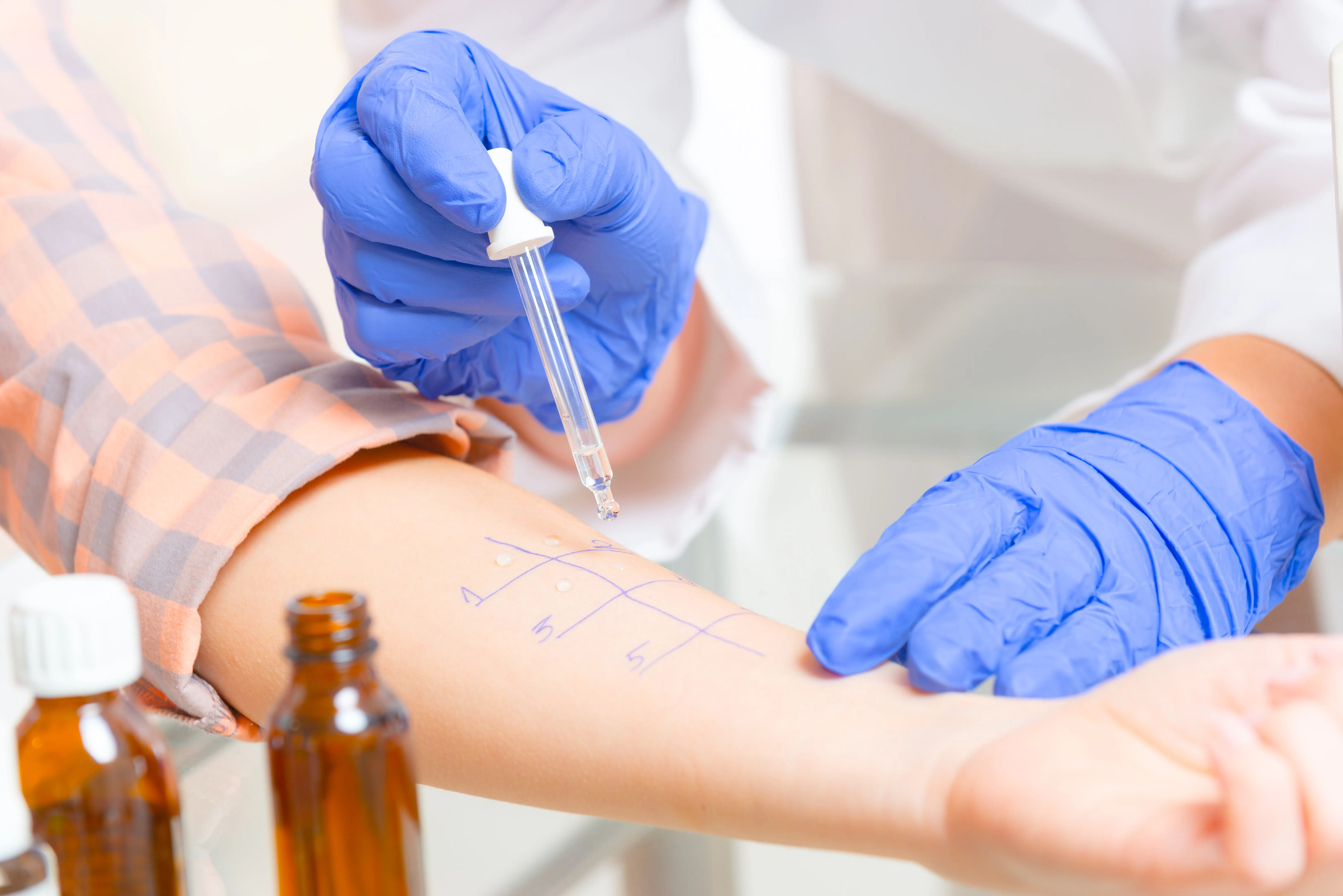Skin Prick Test Singapore
An allergic reaction can manifest as a broad spectrum of medical conditions ranging from a mild rash to severe swelling or even an anaphylactic shock. If you suffer from an acute reaction after coming into contact with a particular substance, it is likely you have an IgE-mediated allergy.
It only takes 20 minutes to determine if one suffers from an IgE-mediated allergy by performing a skin prick test.
What is a skin prick test?
Otherwise known as a scratch or puncture test, a skin prick test is the gold standard for allergy testing. This is conducted to analyse whether one or more of the substances that cause allergies will trigger an immediate allergic reaction. Together with a thorough review of your medical history and a physical examination, a skin prick test can help determine whether a specific substance you get in contact with is likely to elicit an adverse reaction.
How is a skin prick test carried out?
The skin prick allergen test will be administered on the forearm or upper back. Below are the step-by-step procedures involved in conducting a skin prick test:
- The area of your skin where the skin prick test will be administered will be sanitised.
- The nurse may make a series of markings on your skin to aid in the application and reaction analyses of the different allergens.
- A small quantity of various allergens will be applied to your skin, and a tiny, superficial puncture will be made on the skin's surface for each administered allergen.
- The nurse will monitor for any allergic reaction(s) which is typically visible within 20 minutes.
- Reactions will be recorded and evaluated by a doctor subsequently.
What results can I expect?
Results of the skin prick test are usually ready to be analysed after 15 to 20 minutes after we have administered the allergens.
Hypersensitivity towards the allergens usually result in red bumps on the skin surface resembling a mosquito bite, also medically termed as wheal-and-flare. That particular area of your skin will appear raised, red and even itchy. Your nurse will observe for any swelling, redness and other indications of intolerance before recording the measurements of each bump. The level of sensitivity towards the corresponding allergens could be inferred from the size of wheal - larger wheal suggests an increased degree of sensitivity.
If there are no signs of an allergic reaction on your skin, the test result will be negative, indicating that you are likely not allergic to that allergen.
What allergies can a skin prick test detect?
The Speedoc’s standard skin prick test panel checks for immediate allergic reaction to 10 common substances that are known to be allergy-triggering. The list of allergens tested includes:
✔️Dust mites D Pteronyssinus
✔️Dust mites Blomia Tropicalis
✔️Cat
✔️Fungi Alternaria Alternata
✔️Fungi Aspergillus Fumigatus
✔️Grass
✔️Cow Milk
✔️Whole Egg
✔️Peanut
✔️Positive control
We also offer tests for other allergens that can complement the basic package.
Drop us a call at +65 6909 7799 or email us at contact@speedoc.com to find out more.
How much does a skin prick test cost?
A basic skin prick test package carried out by Speedoc’s very own healthcare professionals is priced at $248.52 (inclusive of GST). Additional allergen add-ons are priced at $16.35 separately.
Frequently Asked Questions
A skin prick test is minimally invasive and should cause little to no pain. The lancets used barely penetrate the surface of the skin, hence it doesn’t cause any bleeding. A mild discomfort similar to a superficial scratch may be experienced, but this usually wanes away within a few hours.
It takes approximately 10 minutes to perform the test and the results are usually visible after 15 to 20 minutes.
Although there are many benefits in having a skin prick test done, there is a slight downside to it. Opting for a skin prick test comes with an increased likelihood of an allergic reaction during the testing process. Therefore, it is important for the test to be carried out by a medically trained professional.
Skin prick test is a safe procedure for both adults and children. It is an affordable and quick test that causes minimal harm or discomfort to an individual.
It is recommended to stop taking antihistamines 5 to 7 days before the skin prick allergy test to avoid false negative results.
It takes about 15 to 20 minutes for the results of a skin prick test to show while blood test results will require a much longer waiting time. Skin prick tests are typically more sensitive and can detect allergies that a blood test might not identify.
However, there is no one-size-fits all allergy assessment and it is recommended to consult a doctor to work out the most suitable option for you.
No, fasting is not required before a skin prick test. You can consume food before your appointment. However, we strongly advise you to refrain from consuming any foods or beverages that have previously triggered an allergic reaction.
Despite the fact that it is uncommon for a skin prick test to yield a false negative result, there are certain factors that could lead to an erroneous test result. This includes taking antihistamines 5 to 7 days prior to the test which might suppress the indicative allergic reaction crucial for the diagnosis of an IgE-mediated allergy.
In rare cases, patients might also receive a false-positive result whereby it may seem they are allergic to the allergen, but they actually are not.
We can do the test on children age 9 and above and it can help prevent unfavorable allergic reactions later in life.
